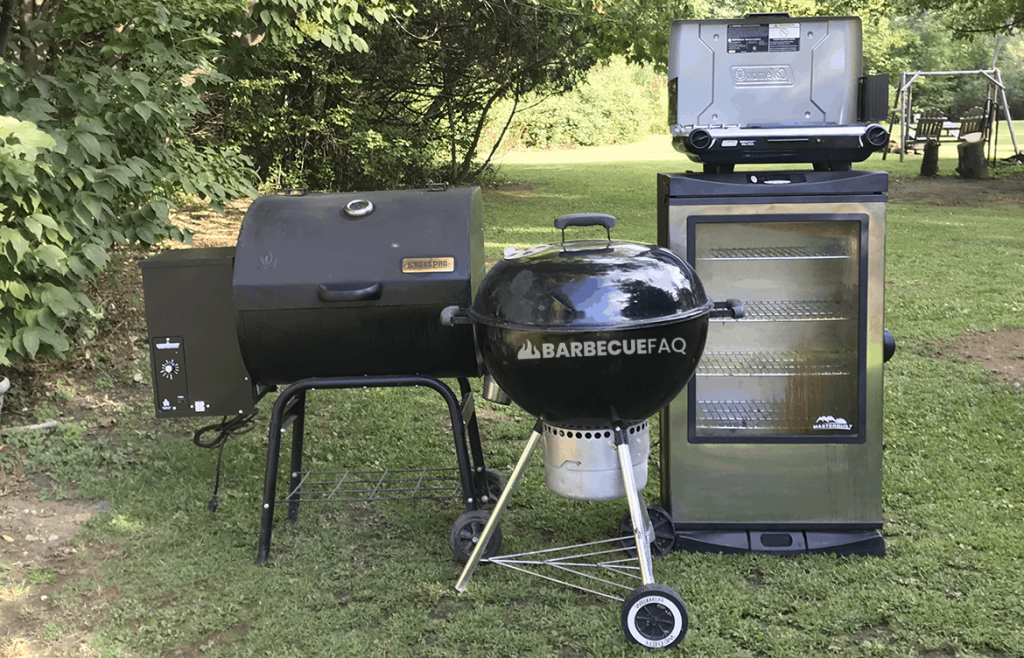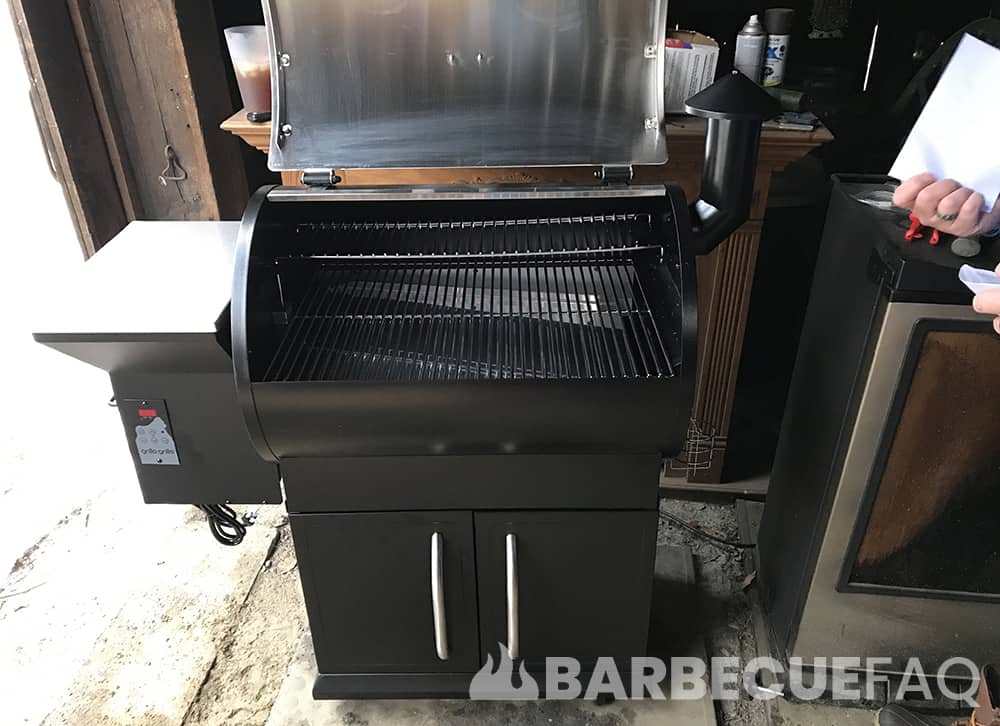I’ve eyeballed the PK Grill for nearly 10 years – I’ve now owned it for 213 days.
Aside from having that retro look that I think is wicked awesome, it’s built like a tank and feels as if it would last me a lifetime.
While I think the latter is true, I don’t necessarily think it’s worth the price tag.
Jump to Sections of this Review
- The Elephant in the Room: The Price
- I LOVE Direct Heat BBQ on the PK Grill
- The Ash Disposal System Sucks
- It’s Built Like a Tank with a 20 Year Warranty (and it’s Light)
- No Longer Made in America?
The PK Grill Costs A LOT for a Charcoal Grill
There’s really no dancing around the fact that the PK Grill (regardless of version) has a rather large price tag.
At the time of Purchase I spent $449.99; It’s now $599.99!This version is no longer available.
What I quickly noticed is that PK Grill’s will run deals often and so I strategically bought mine when I saw they had a deal.
If you’re interested in this grill, pay attention to key barbecue months/days:
- The Month of May
- Labor day
- July 4th
- Summer Months
- etc.
In terms of being “worth” the money:
A Weber Kettle can do much the same stuff for half the cost – but I do think that direct heat BBQ tastes better on the PK Grill (discussed below).
In my tests, the PK grill also seems to use less charcoal – it also holds onto heat really well – meaning it can smoke meat for hours on end, unattended at 225-250F.
Direct Heat BBQ is Superior on the PK Grill
This refers to things like:
- Grilling burgers
- Hot and Fast cooks like skirt steak, steak strips, etc.
- Meat on a stick (beef, pork, chicken, kebabs, etc.)
All of these simply taste better on the PK grill and the main reason for that has to do with how close the grill grates are to the charcoal.

You end up getting this awesome flavor from the spices/rendering of fat, etc. dripping on the hot coals; That vapor then ends up on the meat.
On something like a Weber Kettle, the only way I can simulate this is with a Slow N’ Sear ($100) and an Elevated cooking grate ($42):

If I’m going to grill something small for my Family – like burgers, hot dogs (2-4 people), 1 or 2 steaks – I use the PK grill.
If I have to make Burgers and Hot dogs for tons of people, I’ll use my Weber Kettle – it’s just not feasible on the PK grill to cook for 10+ people at a time.
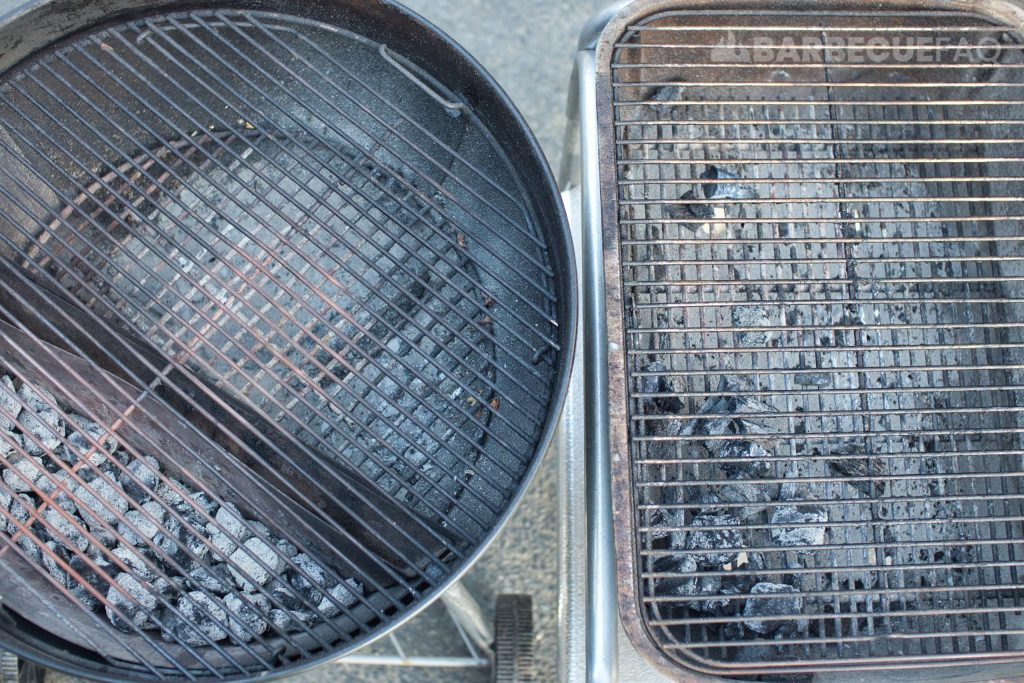
The PK grill simply has less grill space due to being rectangular where-as the Weber kettle is circular.
Due to this, manipulating your food into hot and cool zones is easier on the Weber when you’re cooking a ton of food.
Ash Disposal Sucks
As a long time Weber Kettle user, I’m used to having all my ash being conveniently collected in the ash bucket below the kettle.
On the PK grill, this ash simply accumulates at the bottom.

You’d also be assuming incorrectly if you thought all of the ash would fall through the 2 intake vents.
Rather, you have 3 options:
- Invest in a shop vac to vacuum the ash.
- Use a small dust pan to sweep it.
- Disassemble the bottom and dump the ash.
Right now I do option 3.
Does it suck? Yes.
But to make it easier, I take a disposable aluminum sheet pan and put that below on the shelf and simply collect ash there.
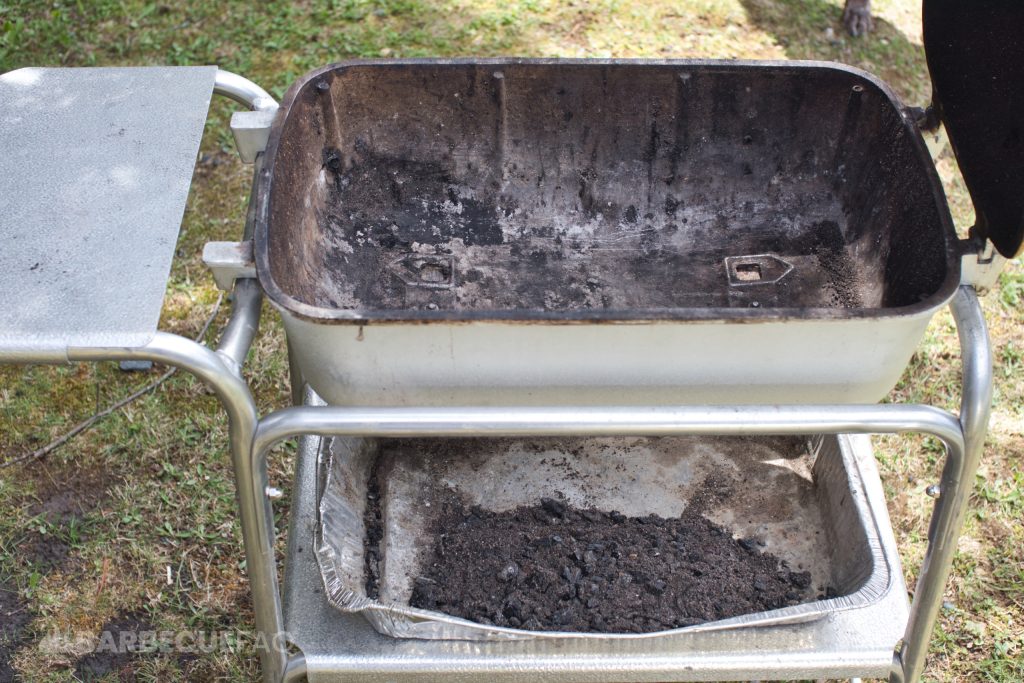
This also helps to catch any rouge embers that may fall through.
Since lump charcoal tends to produce far less ash, I stick to that in the PK Grill and completely avoid briquettes.
This way I can grill like 5 times or so without having to dump the ash; If you use briquettes you’d be able to get around 2 or 3 cooks max.
While It’s Built Like a Tank, It’s Easy to Move
When looking at the grill you’d assume it was pretty hard to move – as it looks sturdy and heavy.
The cast aluminum is surprisingly lightweight and the wheels make the grill easy to move.
Overall, it just feels like the PK grill would last you an eternity and it’s no wonder the grill has a 20 year warranty.
I’m 30 so 20 years is quite literally 2/3’rds of my life.
If the grill makes it to my 50th Birthday, I’ll update this article to let you know!
The “Made in America” Thing
This isn’t something that particularly matters to me but it does to some people.
The newer iterations of the PK grill are now Made in China BUT they’re designed and Engineered in America.
Previously the Original PK (the one in this article) was made in America. With the introduction of the “New Original” they are now no longer made in America.
As far as I know, the 1st Original PK is still made in America (limited quantity)- apart from the Shelves and wheels, but the body itself is cast in Little Rock, Arkansas.
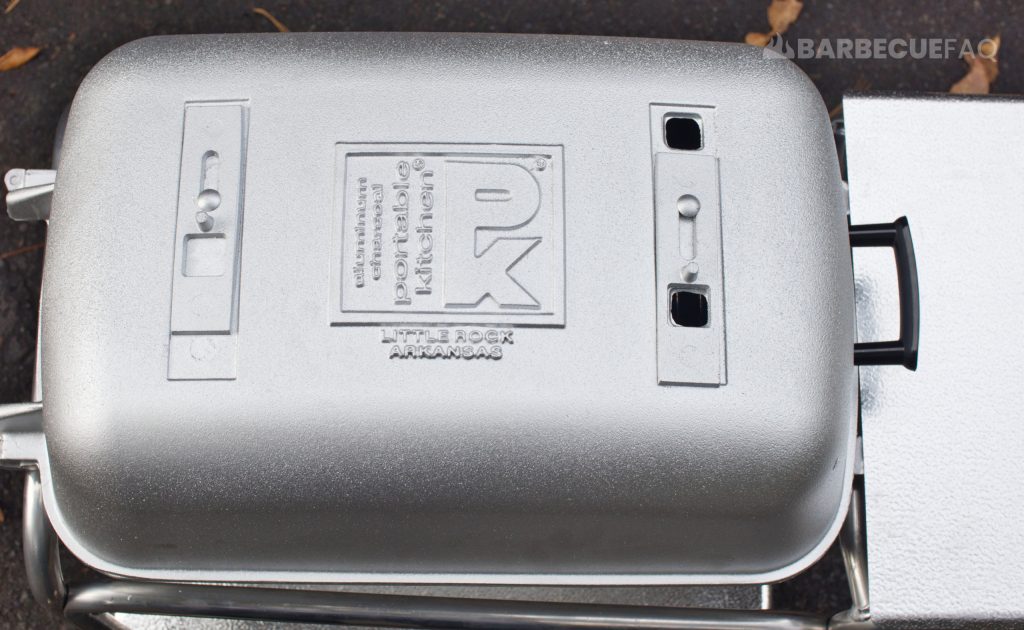
If this sort of thing matters to you, I’d look into grills like like Hastybake – but these also cost 3x the amount of a PK Grill.
Even Weber is made in America with “Globally” sourced parts.


